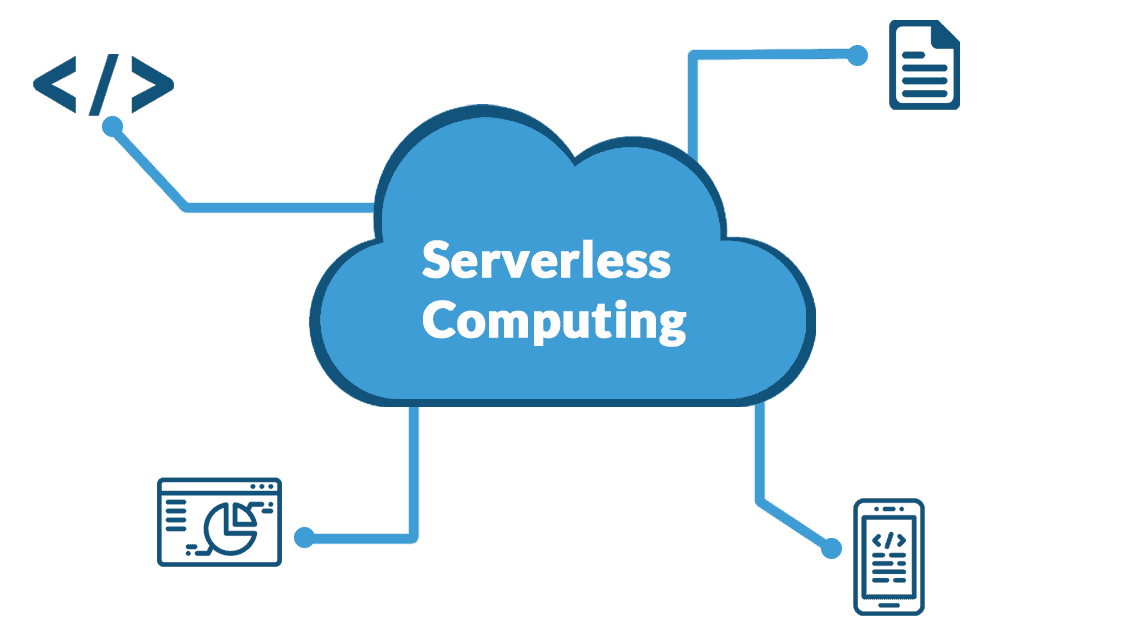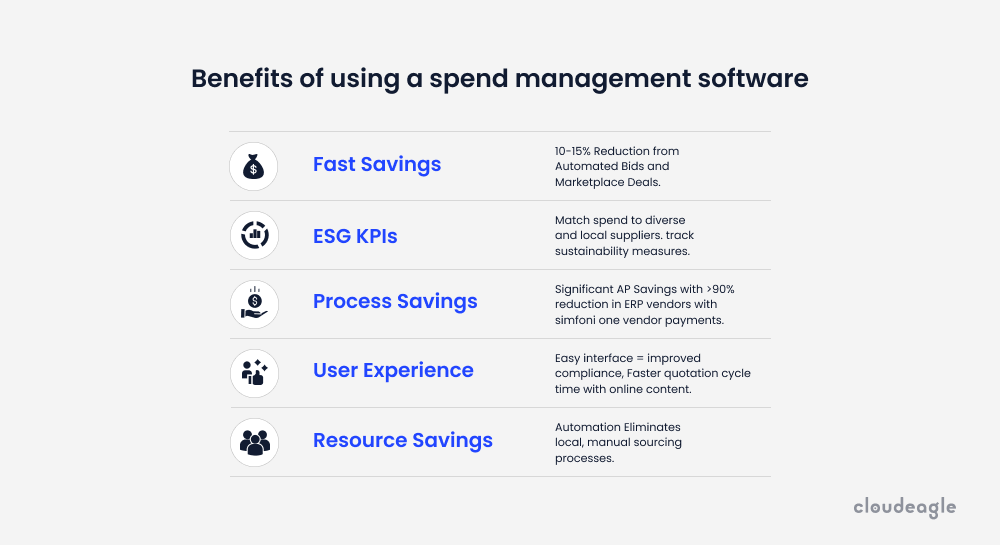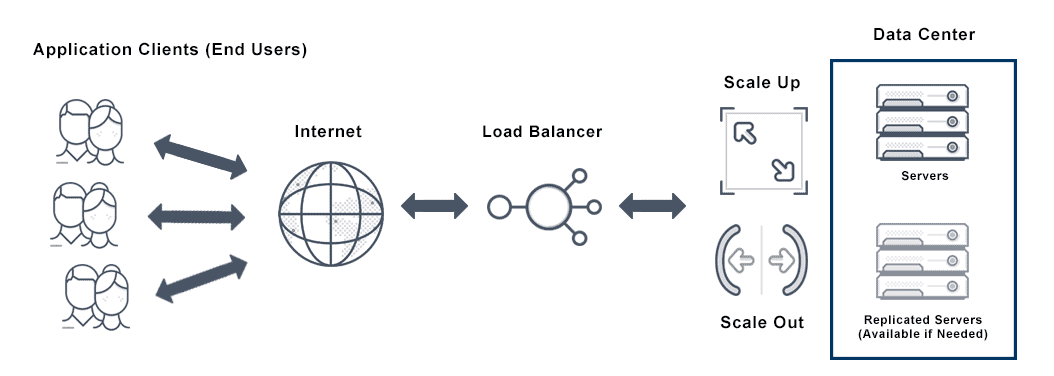HIPAA Compliance Checklist for 2025

As the hybrid cloud is one of your business's most expensive resources today, implementing proper cloud cost management is more critical than ever.
Recent research by Spacelift states that end-user spending on public cloud services is expected to grow by 26% in 2024. However, managing the cloud costs takes a lot of work.
Cloud resources are scattered across teams, providers, and containerized and non-container environments. This makes cloud spending unpredictable and hard to budget, leading to potential cost anomalies.
This blog post will discuss what is cloud cost management, its benefits to your organization, and share some hidden cloud cost optimization strategies. Make sure you read this article to the end to learn more.
What is Cloud Cost Management?
Cloud cost management, often referred to as cloud cost optimization, is the practice of tracking, analyzing, and controlling cloud-related expenses. The goal is to reduce unnecessary spending while preserving performance and efficiency.
This process involves pinpointing areas of overspending, improving how resources are allocated, and uncovering opportunities to save costs across cloud services.m
For the past few years, businesses have become more dependent on cloud computing to boost operational efficiency. Thus, managing cloud cost overruns has become essential to overall cost control.
The cloud offers a growing selection of services and pricing options from companies like CloudEagle, AWS, Azure, and GCP. This gives your business more freedom to choose what you need while making cost management more intricate.
Keeping a close eye on cloud spending habits allows your business to spot waste or unused resources. With this knowledge, you can adjust your cloud setup to be more efficient. This active approach will also ensure resource allocation is done wisely and get the most ROI for your cloud investments.
Now that you’ve understood what is cloud cost management, let's see how it is different from cloud cost optimization.
Cloud Cost Management vs Cloud Cost Optimization
While both terms are used to control cloud spending, they are different. There are fundamental differences between cloud cost management and cloud cost optimization. Here's a breakdown:
Focus
- Cloud Cost Management: This is about tracking, controlling, and reducing cloud expenses. It involves identifying and eliminating wasteful spending, like unused resources or inefficient configurations.
- Cloud Cost Optimization: This broader strategy aims to maximize the efficiency and effectiveness of your cloud spending. It goes beyond cost reduction and considers how cloud resources can best support your business goals.
Goals
- Cloud Cost Management: The primary goal is to save money on cloud services.
- Cloud Cost Optimization: This approach seeks to optimize spending to align with your business's objectives.
Approach
- Cloud Cost Management: This is often a reactive process. You might react to a sudden spike in your cloud bill by investigating the causes and taking corrective actions.
- Cloud Optimization: This is a proactive strategy. You implement tools and processes to monitor and optimize cloud usage continuously. The goal is to prevent cost issues before they arise.
Cloud cost management is a crucial first step, but cloud cost optimization takes it a level further. It ensures you get the most value from your cloud investment while controlling costs. Both approaches are essential for your business's cloud computing services.
Why is Cloud Cost Management Important?
Effective cloud cost management is essential for businesses to control expenses, optimize resource usage, and boost ROI. Without it, cloud spending can spiral out of control, straining budgets and negatively affecting overall financial performance.
Firstly, cloud cost management helps you save money and improves budget predictability. Cloud cost management tools identify and eliminate wasteful spending on unused resources.
Optimizing your cloud cost can significantly reduce expenses. SaaS cost optimization practices also provide insights into cloud spending patterns, enabling FinOps teams to budget more accurately and improve financial forecasting.
Secondly, cloud cost management practices increase resource efficiency and improve performance. Identifying over-provisioned or under-utilized resources can help you right-size your cloud instances.
This ensures you only pay for what you need. This optimization frees up resources that can be directed towards initiatives that drive business value.
The Hidden Costs of Cloud Services
Hidden costs in cloud services can quietly strain your budget if left unchecked. Common culprits include data transfer fees, surprise API charges, idle or underutilized resources, and managing complex multi-cloud setups.
To avoid these, businesses must actively track cloud usage, optimize resource allocation, and thoroughly understand provider pricing models.
Unutilized Resources: Cloud resources like virtual machines (VMs) and storage come with a price tag, even when idle. These hidden costs can drain your cloud budget and disrupt effective SaaS budgeting if not closely monitored and optimized.
Idle VMs might be left on after hours or over weekends, and excessive storage can accumulate unused data backups or old project files. Cloud cost management practices help identify and eliminate such waste.
Inefficient Pricing Models: Cloud providers offer various pricing models, from pay-as-you-go to reserved instances. Choosing the wrong one can lead to overspending.
Pay-as-you-go is ideal for unpredictable workloads, but reserved instances offer significant discounts for consistent usage. It is crucial to analyze usage patterns and select the most cost-effective model.
Security Misconfigurations: Security is paramount, but misconfigurations can lead to unexpected charges. For example, data egress fees apply when transferring data from a specific cloud region.
Leaving data exposed or public by mistake can incur significant egress costs, especially in multi-cloud environments. Implementing proper access controls and monitoring data transfer activities helps avoid such surprises.
Vendor Lock-in: While some vendors offer attractive introductory rates, getting locked into a specific provider can limit your options in the long run. Switching providers later might involve data migration costs and potential compatibility issues.
Maintaining platform independence allows you to leverage competitive pricing models from different vendors.
The Benefits of Effective Cloud Cost Management
Effective cloud cost management brings several key benefits: it reduces unnecessary spending, improves how resources are used, and provides clearer financial visibility.
By optimizing cloud usage, businesses can cut operational costs, boost ROI, and align cloud investments with strategic goals.
Cost Optimization
Inefficiencies like idle resources, unused services, and duplicate subscriptions can drain your cloud budget. With CCM tools, you can drive better spend optimization by identifying and eliminating these wasteful elements.
Cloud cost management tools provide granular visibility into cloud spending. This allows you to identify waste areas, such as underutilized virtual machines or forgotten instances.
With this information, you can eliminate unnecessary services and negotiate SaaS contracts more effectively to secure better pricing with cloud providers. By eliminating waste, CCM helps you get the most out of your cloud investment.
Improved ROI
Cloud cost management directly improves your return on investment (ROI). Every dollar saved on wasteful spending translates to a dollar that can be directed toward strategic initiatives.
When you optimize your cloud costs, you free up resources to reinvest in other areas of your business. This could mean allocating funds to new cloud-based projects that can drive innovation or enhance customer experience.
Enhanced Resource Management
Cloud resources come in various configurations. Choosing the right ones can significantly improve performance and cost.
CCM tools provide insights into resource utilization. You can see which resources are overloaded or underutilized, allowing you to right-size instances and optimize allocation.
Additionally, cloud cost management can automate tasks like scaling resources up or down based on usage patterns. This will ensure you have the right amount of power for your needs without overspending.
Increased Visibility and Control
Your organization may struggle with visibility into its SaaS spending. Cloud bills can be complex and difficult to understand, making it challenging to identify cost trends and make informed decisions.
Cloud cost management solutions provide centralized dashboards and reporting tools that offer clear insights into your cloud spending patterns. This increased visibility helps you optimize SaaS spend, track costs, set budgets, and make data-driven decisions about your cloud strategy.
With better control over your cloud finances, you can avoid unexpected bill shock and ensure your cloud spending aligns with your business goals.
The Five Cloud Cost Management Strategies
As mentioned earlier, cloud cost management is challenging yet critical. The right strategies will help you optimize your cloud costs, maximize resource efficiency, and achieve greater financial control.
Rightsizing Resources
Rightsizing resources is the art of matching your cloud resources to your actual workload needs. This means that the resources your business is using are neither over-provisioned nor under-provisioned.

There are several strategies you can use to rightsize your resources effectively. Cloud providers offer different virtual machine types with varying configurations.
By monitoring resource utilization, you can identify opportunities to scale VMs up or down to match your workload perfectly. You can do this manually or leverage auto-scaling features that dynamically adjust resources based on predefined thresholds.
Cloud cost management tools can also analyze your usage and recommend optimal VM sizes or instance types, taking historical data and future forecasts into account.
The best way to optimize complex cloud spending is to utilize a SaaS management platform like CloudEagle.ai. This cloud cost management platform is like an efficiency expert for your resources.
They analyze your usage to identify opportunities to optimize by scaling resources up or down to match your needs perfectly. With regular usage reports, you can fine-tune resources to meet your needs.
Implement Serverless Architecture
Serverless architecture offers a compelling cost-management strategy by eliminating the need to provision and manage servers. This approach focuses on deploying code that executes in response to events.
Cloud providers handle the underlying infrastructure. As Serverless architecture offers a pay-per-use model, you only pay for the resources your code consumes during execution.

This eliminates the cost of idle servers, a major contributor to cloud expenses. Additionally, serverless functions automatically scale, further optimizing resource usage and cost.
Serverless functions also boast impressive scalability, automatically adjusting to meet peak demands without any manual intervention on your part. Plus, developers can focus on writing clean code without getting bogged down in server management, leading to faster development cycles.
However, serverless isn't a one-size-fits-all solution. It's ideal for workloads with short execution times and event-driven triggers. To keep costs down, write efficient code that minimizes resource consumption.
Reserved Instances and Savings Plans
Do you want to reduce your SaaS spend? RIs and Savings Plans are cloud discounts for committing to usage. Think of it like a bulk discount for cloud resources.
Both options can lead to substantial savings compared to paying on-demand prices. The discounts you receive from reserved instances or savings plans depend on numerous factors.
The key benefit here is predictable costs. You lock in a discounted rate by committing to RIs or Savings Plans. This makes budgeting for your SaaS expenses much easier.
While offering the deepest discounts, RIs require a fixed configuration. On the other hand, savings plans offer a more adaptable approach. Commit to spending per hour and get discounts on various cloud resources.
So, which one is right for you? RIs can help you get deeper discounts if your workloads are consistent and predictable. However, if your cloud usage fluctuates, Savings Plans offer more flexibility as they apply discounts to a broader spectrum of resources.
Cloud Cost Management Tools
Cloud cost management tools are the cornerstone of any successful cloud cost optimization strategy. These tools go beyond simply tracking costs.

They provide a granular breakdown of your cloud usage across various services, allowing you to pinpoint areas where your money is being spent. This level of visibility helps you set budgets, receive alerts for potential overspending, and forecast future costs based on usage trends.
Some of the best benefits of using CCM tools to optimize cloud cost management are:
- Significant cost savings
- Increased efficiency
- Improved budgeting and forecasting
- Boosted performance:
- Simplified cost allocation
- Data-driven decision making
But the true power lies in their SaaS spend optimization capabilities. Some advanced CCM tools leverage machine learning to analyze your usage patterns and recommend automated actions. These include:
- Rightsizing instances
- Eliminating overprovisioning
- Identifying and terminating idle resources
- Suggesting the optimal use of committed use discounts
- Spot instances for cost-effective workload management.
By automating these tasks, cloud cost management tools can maximize the return on your investment in cloud infrastructure.
Automatic Scaling and Power Scheduling
Automatic scaling (AI) dynamically adjusts your cloud resources based on real-time demand. This eliminates the need for static provisioning, where you pay for a fixed capacity regardless of usage.

With automation-induced scaling, your cloud environment automatically scales down during periods of low traffic, reducing the number of active compute instances.
Conversely, when demand spikes, automatic scaling seamlessly scales your resources to handle the increased workload. This ensures that your applications continue to perform optimally without any disruptions.
Remember that not all workloads require 24/7 operation. Power scheduling allows you to define periods when cloud resources can be stopped or hibernated, effectively pausing your cloud bill.
This strategy mainly benefits non-critical workloads or those exhibiting predictable usage patterns. Cloud providers often offer features like scheduled shutdowns for instances or managed databases.
Key Takeaway: Mastering Cloud Cost Management
While presenting challenges, cloud cost management unlocks the true potential of your cloud investment. It is an ongoing process, not a one-time destination.
Implementing these strategies will help you better understand your cloud spending patterns, identify areas for optimization, and ultimately achieve greater financial control by providing complete cost visibility.
That's where CloudEagle.ai comes in. CloudEagle's capabilities go beyond simple cost tracking. It analyzes your cloud resource usage to identify hidden savings opportunities.
CloudEagle.ai isn't just strong on cost savings for cloud services; it also integrates smoothly with your existing systems for a hassle-free cloud lifecycle management experience.
Do you want us to manage your business's cloud costs? Schedule a demo with the experts today!
Frequently Asked Questions
- How to control cloud costs?
Use rightsizing, auto-scaling, reserved instances, and regular monitoring to align resources with usage and avoid waste. - What is cost management in cloud computing?
It's the process of tracking, analyzing, and optimizing cloud spending to improve efficiency and reduce unnecessary costs. - What are the three types of cost management?
Planning, monitoring, and controlling, these ensure budgets are set, expenses are tracked, and spending stays on target. - What are the benefits of cost management?
It reduces waste, improves budget accuracy, boosts ROI, enhances financial visibility, and aligns spending with business goals.

%201.svg)







.avif)




.avif)
.avif)




.png)









